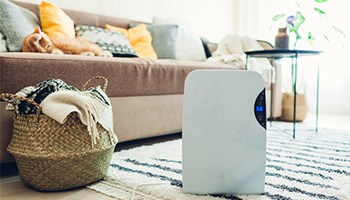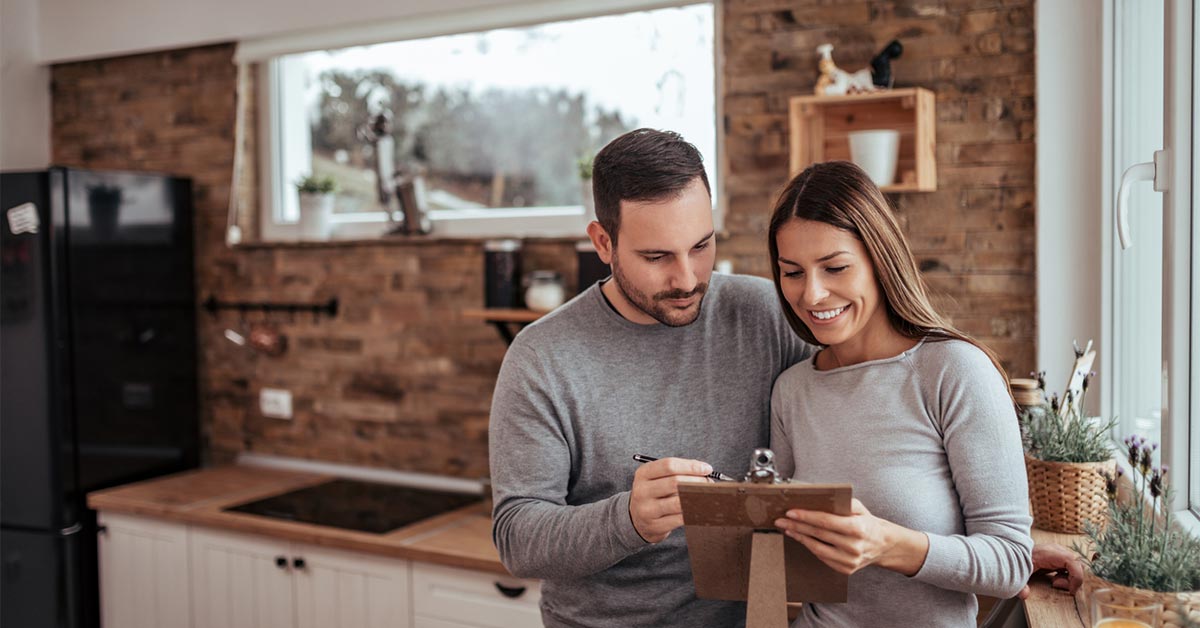It seems fall is as hot as summer these days. The nights may be a little cooler, but the days can still be uncomfortable. If your home is still heating up and you want to cut down on air conditioning, or don’t have AC, check out these creative and environmentally friendly ways to stay cool without it.
1. Keep the windows closed and covered

The simplest thing you can do to keep a room cool without air conditioning is to make sure the windows are shut and covered once the temperatures start to rise in the morning. Your windows let in a considerable amount of heat, especially if it’s getting direct sunlight. If the temperature outside is hotter than inside, keeping the windows shut will help your home stay a little cooler. Block those direct sunlight windows with an awning, shutters, or blackout curtains. You can also try installing insulated window films which is a thin laminate applied on the glass surface. These window films block a majority of UV rays and reduce glare and heat from emitting into your home.
2. Rotate your ceiling fan counterclockwise
Believe it or not, ceiling fans have two settings: clockwise and counterclockwise. When it’s hot, change the setting of your ceiling fan blades to rotate counterclockwise (when looking up) and on the highest setting. This allows the blades to push air straight down creating a wind-chill breeze. In the cooler months, set the fan blades back clockwise on low so warm air is spread slowly throughout the room. It’s also a good idea to keep your ceiling fan dust-free. Not because it’s hygienic, but it helps your fan work better as it eliminates wind drag.
3. Do chores at night

Hold off any baking or roasting until nighttime because nothing heats a room like a 400-degree oven. Your oven isn’t the only item to consider though. Large appliances like your dishwasher or washer and dryer give off a significant amount of heat when powered up. Turning them on during the hottest time of the day allows hot air to fill up quickly in your home. So, put off chores that require you to switch on appliances until the cooler nighttime hours.
4. Change out incandescent lights
Kitchen appliances aren’t the only things that create unnecessary heat in your home. The temperature of a fully heated incandescent light bulb’s filament is approximately 4000°F. Not to mention, they waste an estimated 90 to 98 percent of the energy they emit as heat. So, if you’re trying to keep your home cool, small shifts like switching to CFL or LED bulbs can cool your home while also lowering your electricity bill!
5. Use a Dehumidifier

For some people, moist heat feels much more uncomfortable than dry heat. Depending on where you live, humidity can make the air feel even hotter. That’s because moisture in the air stalls your body’s natural process of cooling down. To prevent sticky air from taking over your house, use a dehumidifier. Although it won’t reduce the room’s temperature, it’ll help suck the moisture from the air allowing you to feel more comfortable.
6. Insulate or weather-strip your home
Many of the materials used to keep your home warm in the winter also help with cooling your home. Insulating your attic and walls can lower your energy bill, locking cool air in and keeping hot air out. Consider also weather-stripping around windows and doors to keep cool air from escaping through the cracks. It’s inexpensive and does not require much time to install.
7. Swap your sheets

Switching your bedding not only freshens up your room but provides a great way to stay cooler when sleeping. Swap your bed linen for more breathable materials like cotton during warmer months. The lower the thread count of the cotton, the more breathable it is since a higher thread count has more weaving per square inch. As a bonus, get yourself a cooling pillow to alleviate excessive heat build-up. Heat has the tendency to rise, so if it’s hot enough that you’re having a hard time sleeping, hit the downstairs couch or lay your mattress on the floor.
8. Set up portable fans in the right place
Everybody has fans, but not everybody knows how to use them properly. Simply turning on a fan hoping it will cool your home is where a lot of people misunderstand cooling efficiency. Because fans merely move air around, rather than cooling the air, it’s best to create an air exchange or cross breeze. Strategically place fans in areas where you can draw in cooler air from the outside (or cooler parts of the house like the hallways). You might also try using your bathroom fan or the exhaust fan in your kitchen to pull the hot air out of your home.
9. Create a DIY Air Conditioning

Don’t have air conditioning? With a bowl of ice and a fan, you can create an ocean breeze right in your home. Fill a metal mixing bowl with ice or an ice pack and position it in front of a fan. Turn the fan on and as the ice melts, the fan will pick up the cold-water particles and blow them around the room creating a cooling breeze. It’s an upgrade from a regular fan!
10. Focus on your body temperature
If it’s really hot, don’t forget to pay attention to your body temperature. Heatstroke is a serious form of heat injury and can kill or cause damage to the brain and other internal organs. Consider these cooling strategies:
- Drink more water
- Snack on frozen treats
- Take a cold shower
- Wear breathable clothing
- Apply a cold cloth or ice pack on yourself
Sometimes the difference between your house feeling stuffy or cool is a matter of degrees — literally! These tips can help lower the temperature inside your house enough to keep things comfortable.
The information in this article is obtained from various sources and offered for educational purposes only. Furthermore, it should not replace the advice of a qualified professional. The definitions, terms, and coverage in a given policy may be different than those suggested here. No warranty or appropriateness for a specific purpose is expressed or implied.


